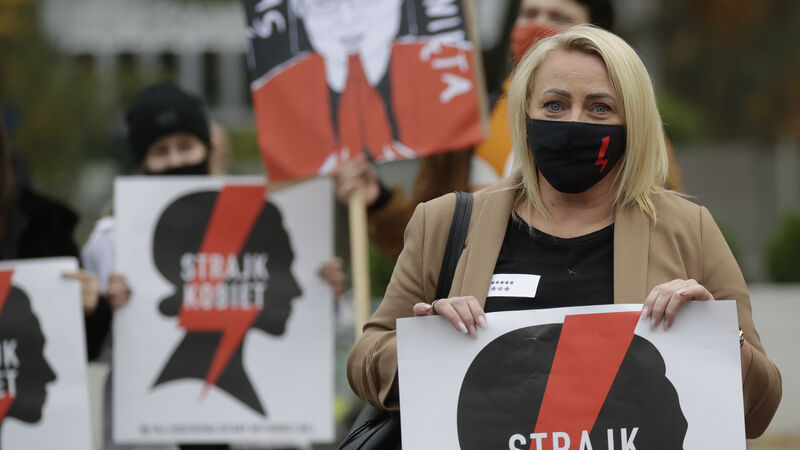Will women defeat Poland’s illiberal regime?

Women's rights activists with posters of the Women's Strike action protest against the recent tightening of Poland's restrictive abortion. Picture: AP/Czarek Sokolowski
Authoritarian political leaders in Poland and Belarus have tested the limits of public tolerance in recent months. In both countries, they have provoked mass demonstrations. And in both cases, women have been in the front ranks of popular opposition.
In a rigged election on August 9, Belarusian President Aleksandr Lukashenko gave himself 80% of the vote when a more plausible 55% would have sufficed. Poles followed the events in Belarus closely and with admiration, hoping for similar mass opposition to the increasingly despotic Law and Justice (PiS) government.













